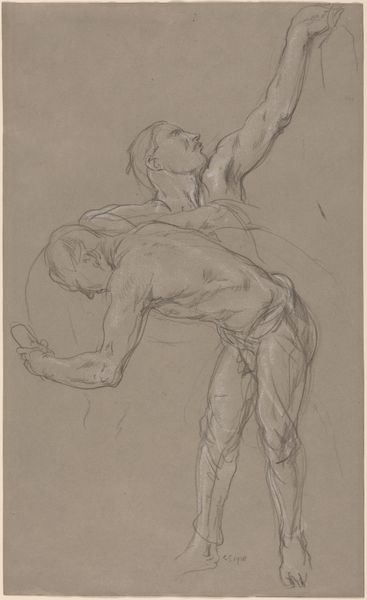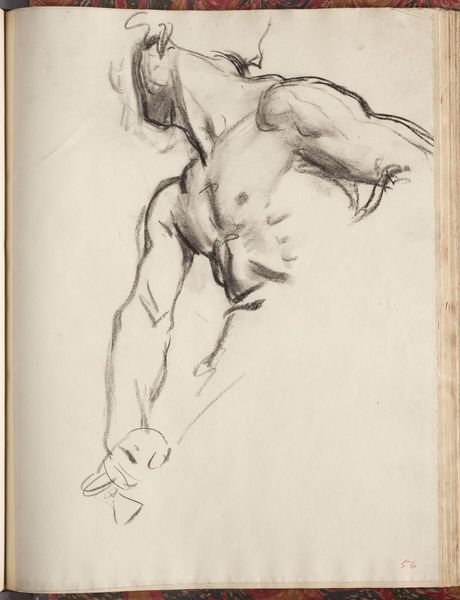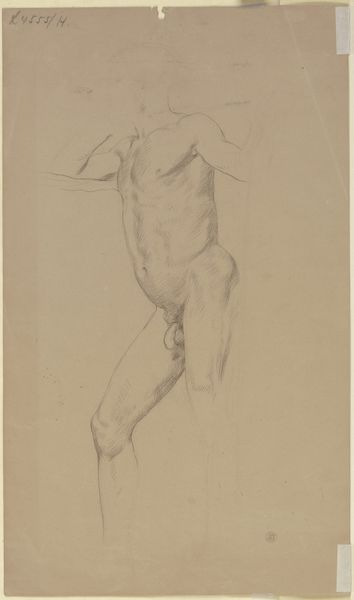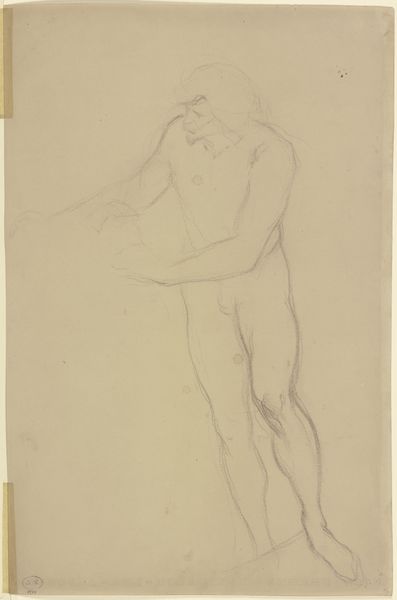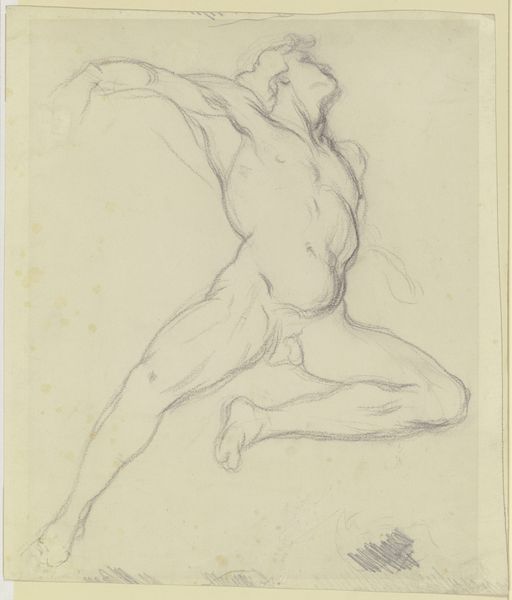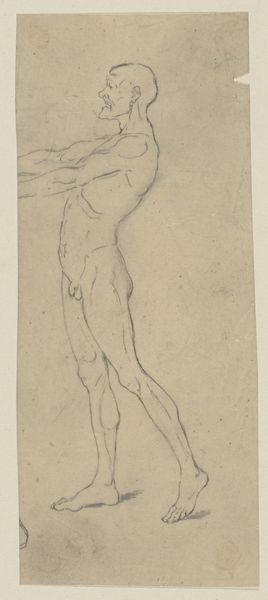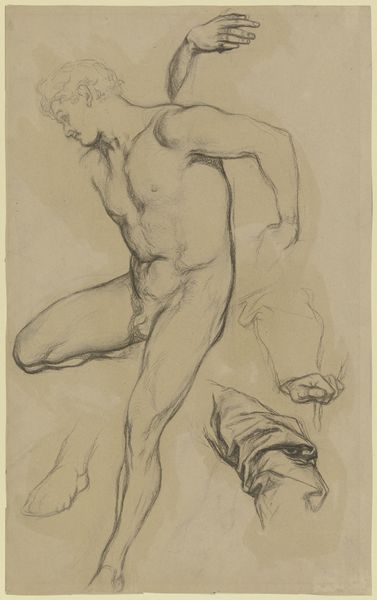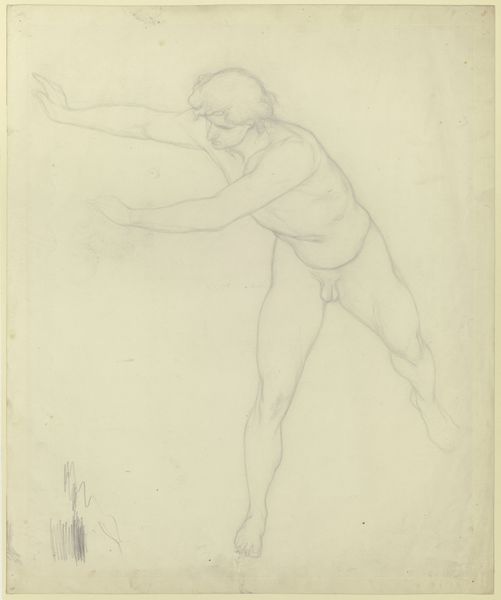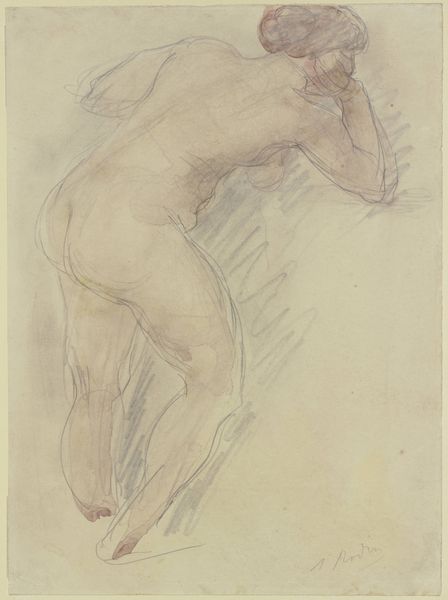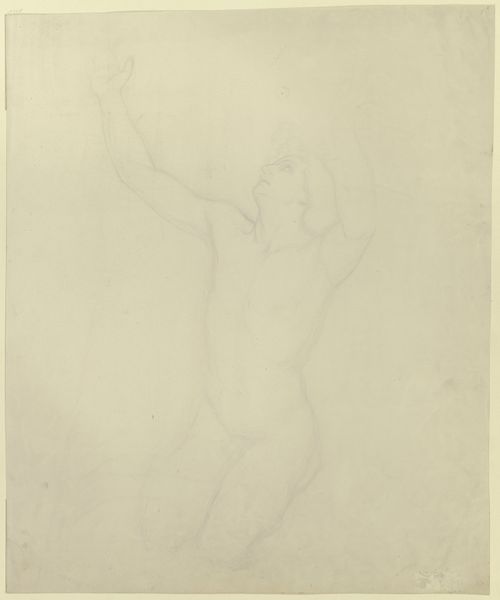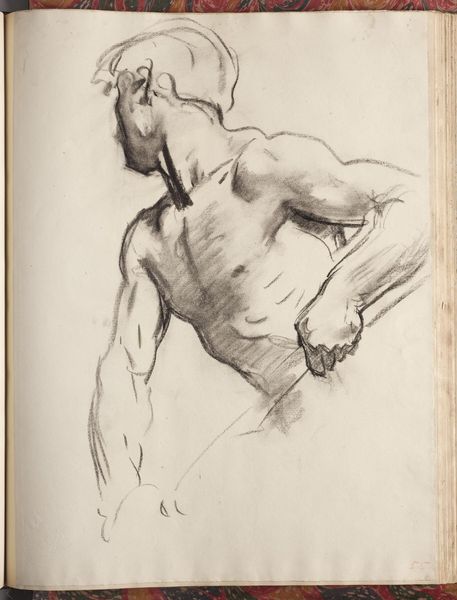
Seated Male Nude (recto); Crouching Male Nude (verso) 1864 - 1874
0:00
0:00
drawing, pencil
#
portrait
#
drawing
#
figuration
#
pencil
#
academic-art
#
nude
#
male-nude
Dimensions: Sheet: 13 x 9 5/16 in. (33 x 23.7cm)
Copyright: Public Domain
Editor: This is Paul Baudry's "Seated Male Nude (recto); Crouching Male Nude (verso)", made between 1864 and 1874, using pencil. What strikes me is the use of, seemingly, one sheet of paper, used for the creation of two distinct nudes. What can you tell me about this work? Curator: Consider the materiality: pencil on paper. Cheap, reproducible. Baudry's choice subverts the classical heroic nude typically rendered in marble or oil paint, which reinforced class structures. Editor: Interesting. How so? Curator: These are studies. They speak more to the means of artistic production accessible to the masses in the 19th century rather than a celebration of aristocratic values. The recto and verso nature hints at the artistic labor - every surface is valuable, right? Does the rapid drawing style seem efficient to you? Editor: It does, there’s an immediacy to the line work. How does this connect to social context? Curator: Academic art was the product of intense, almost industrial production methods. Think of the economics here. Academic workshops used cheap materials like paper and charcoal/pencil for training in replicating established aesthetics. In the late 19th Century, art’s means of reproduction, thanks to advancements in printing technology, became widely disseminated through inexpensive periodicals and books, fueling artistic trends but also disrupting hierarchies of production. What do you think about that? Editor: That does make you rethink this. Seeing it not as a grand statement but part of a larger production chain. Thanks, that perspective shifted my view entirely. Curator: Precisely. The beauty of looking closely is reevaluating what’s at stake.
Comments
No comments
Be the first to comment and join the conversation on the ultimate creative platform.
